I got out yesterday to Welney Wetlands and Wildlife Trust, just over the border into Norfolk from where I live in Cambridgeshire.
The place was wet. In summer, this whole area is a meadow with the odd pond or two. Now it's part of the Ouse Washes and is doing its job of holding vast quantities of water that would otherwise flood the fens.
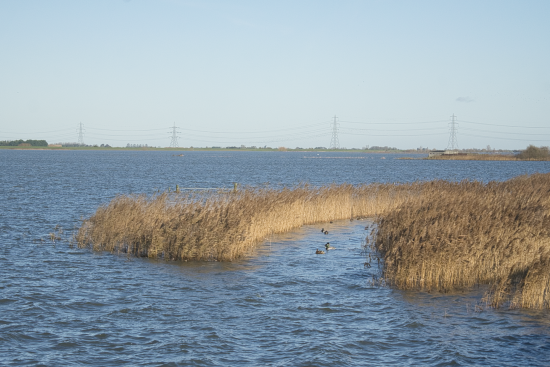
The pylon line in the background was designed by my father. I'm not sure whether that counts as a legacy.
It was a day for ducks, of course:
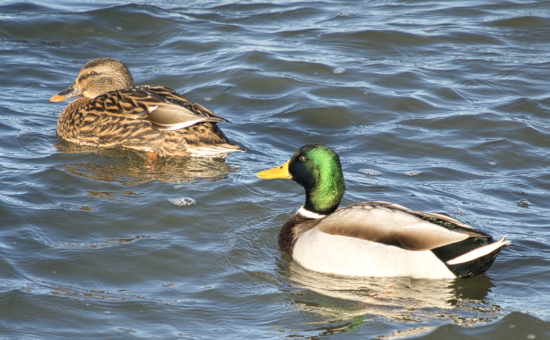
Those mallards looked great in the winter light.
The pochards were out in force:
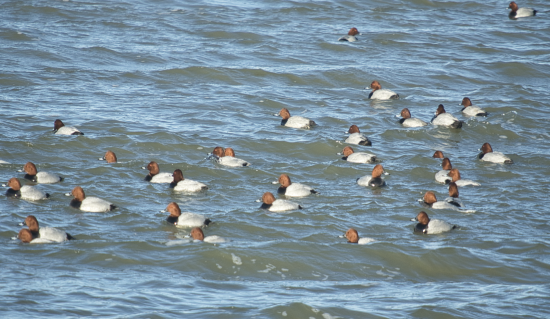
There is not a female amongst that lot. Almost all of them have the sense to winter in Spain. The males are in Norfolk.
It wasn't just ducks though:
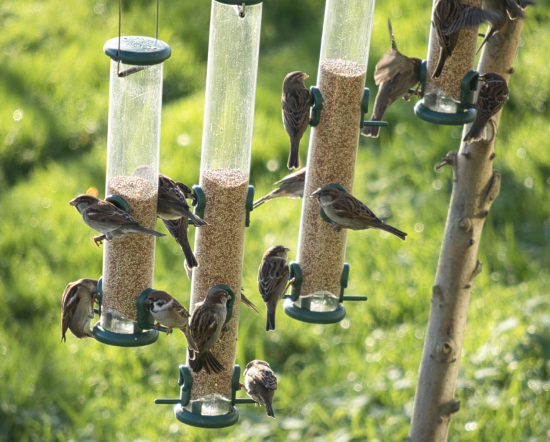
And if you think that lot are just the common house sparrow, the one with the black cheek mark on the bottom left is a tree sparrow - a speciality at Welney and very rare now. Note the lovely chocolate head as well.
But the birds of the day were undoubtedly lapwings and golden power, which were murmurating with each other.
This was amazing, and maybe a mile distant:
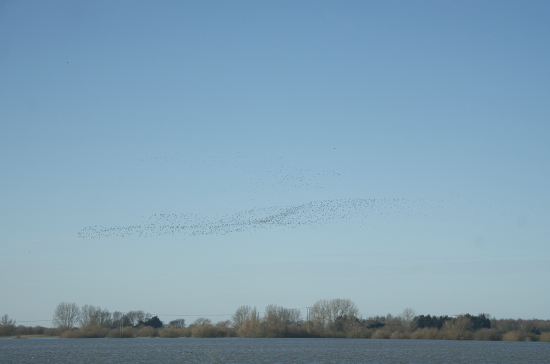
This is enlarged:
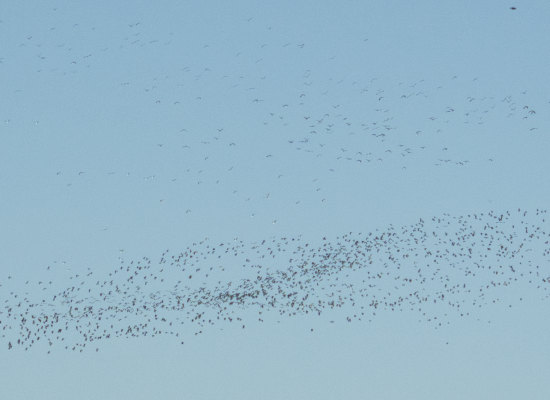
The lapwing are at the bottom and the smaller golden plover are above. They always do it that way. I have no idea why - and have not found an answer.
One of the exciting features of lapwing murmurating is when they turn and reveal their white bellies:
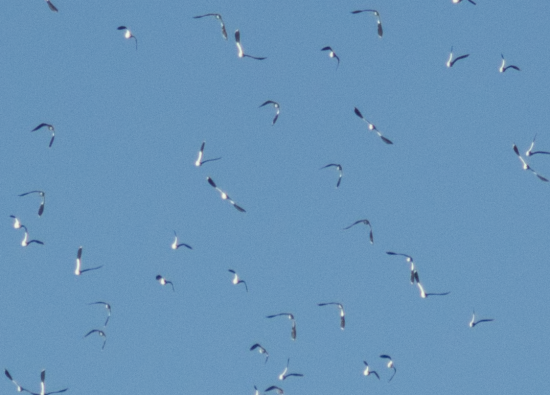
That is blown up a lot - but I don't care - this was an amazing sight. I reckoned there were maybe 5,000 lapwing in the air and 3,000 golden plover.
A great birdwatching session. Nature is a great restorative.
Thanks for reading this post.
You can share this post on social media of your choice by clicking these icons:
There are links to this blog's glossary in the above post that explain technical terms used in it. Follow them for more explanations.
You can subscribe to this blog's daily email here.
And if you would like to support this blog you can, here:


 Buy me a coffee!
Buy me a coffee!

I’ve learned something… I thought tree sparrows were distinguishable only by being smaller than the house sparrow. I didn’t know they had a black patch on their cheek. I come here for the economics, the ornithology is a bonus. Thank you for educating me on both!
🙂
I have been looking at them again this morning….
It’s great to see these observations. Living on Anglesey I get a chance to sit and watch birds and since moving here I’m finding places to observe them. A wonderful way to divert my thoughts away from the dissatisfaction and disappointment in our political representatives.
When I lived in a small village above Lathkil Dale (Peak District) I was fortunate to enjoy the sight of a murmuration of starlings – it was huge, balletic and almost beyond imagination – lucky you seeing such with lapwings –
They were doing it again this morning
But today I chose just to watch
yes – I learnt (or was I taught?) as a youngster in Africa to watch rather than be behind the lens (1950s/60s!)
Lived for many years in Welney and to listen to the Bewick and Whooper swans in the evening from our garden was magical . Loved the photographs brings back many memories
Thanks
Very few Bewicks now. They stop short in the Netherlands these days.
A few days ago, I expressed a (frustrated) interest in commenting on the feasibility of bitcoin processes. You suggested I add my comments to a random entry. I do so now.
A payer and a payee can settle the resulting debt through a banking process:
1. The payer administers a zero-sum pair of postings:
a. A credit to its current account with the payer’s bank.
b. A debit to its payables account for the payee
(typically thereby anticipating and/or reversing an Owed-Wealth position
established by the associated Trade/Employment Transactions).
2. The payee administers a zero-sum pair of postings:
a. A credit to its receivables account for the payer
(typically thereby anticipating and/or reversing an Owed-Wealth position
established by the associated Trade/Employment Transactions).
b. A debit to its current account with the payee’s bank.
3. The payee’s bank administers a zero-sum pair of postings:
a. A credit to its current account for the payee.
b. A debit to its current account for the clearing house.
4. The clearing house administers a zero-sum pair of postings:
a. A credit to its current account for the payee’s bank.
b. A debit to its current account for the payer’s bank.
5. The payer’s bank administers a zero-sum pair of postings:
a. A credit to its current account for the clearing house.
b. A debit to its current account for the payer.
And back to 1 again.
Each such Transaction is an integral and indivisible whole.
Indeed, there is a single integrated ‘ker-ching’ moment,
in which the whole ‘zero-sum-closed-circle-of-zero-sum-double-entry-postings’
either happens in total, or doesn’t happen in total (i.e. is reversed in total).
There is simply no ‘deposit’ there to ‘on-lend’. In a macro-economic perspective (i.e. as opposed to an administrative perspective), one must not focus too closely on the ‘deposit’ by the payee into the payee’s bank as if it could happen in isolation, and then ask what the payee’s bank does with that deposit.
In theory, all agents partaking in in each such transaction have to record zero-sum postings, and maintain positive equity (backed up by ‘real wealth’). If there is a prospect of imminent failure in the banking process, the double-entry process ensures that somewhere that real wealth will be there to guarantee repayment.
With a bitcoin transaction, elements 1a, 2b, 3, 4 and 5 simply do not exist. If there is a prospect of imminent failure in a bitcoin process, there is no such process. If the bitcoin world explodes, where do bitcoin holders go to get some value back.
All bitcoin processes are versions of pyramid-selling or monopoly-money.
I broadly agree
Why the uncertainty. We just don’t know too many of the Bitcoin entries.